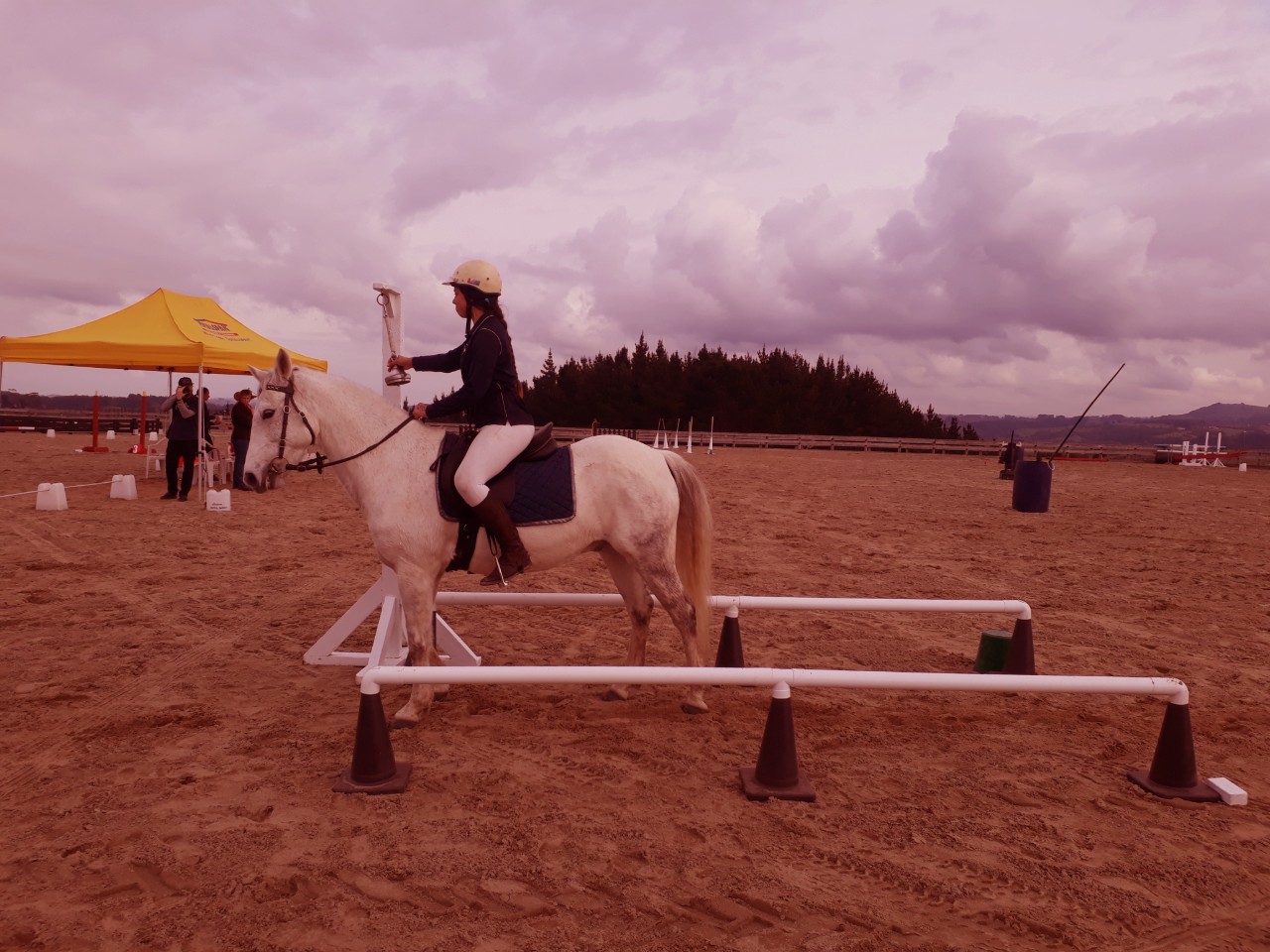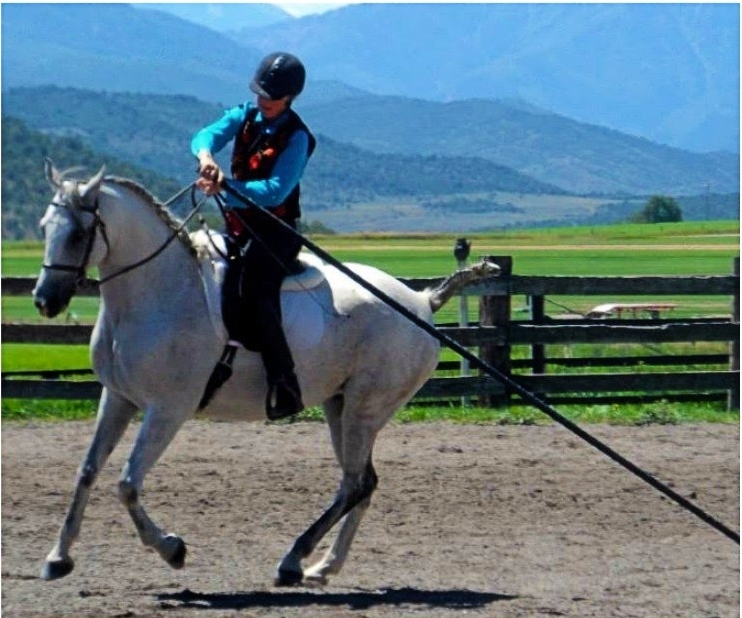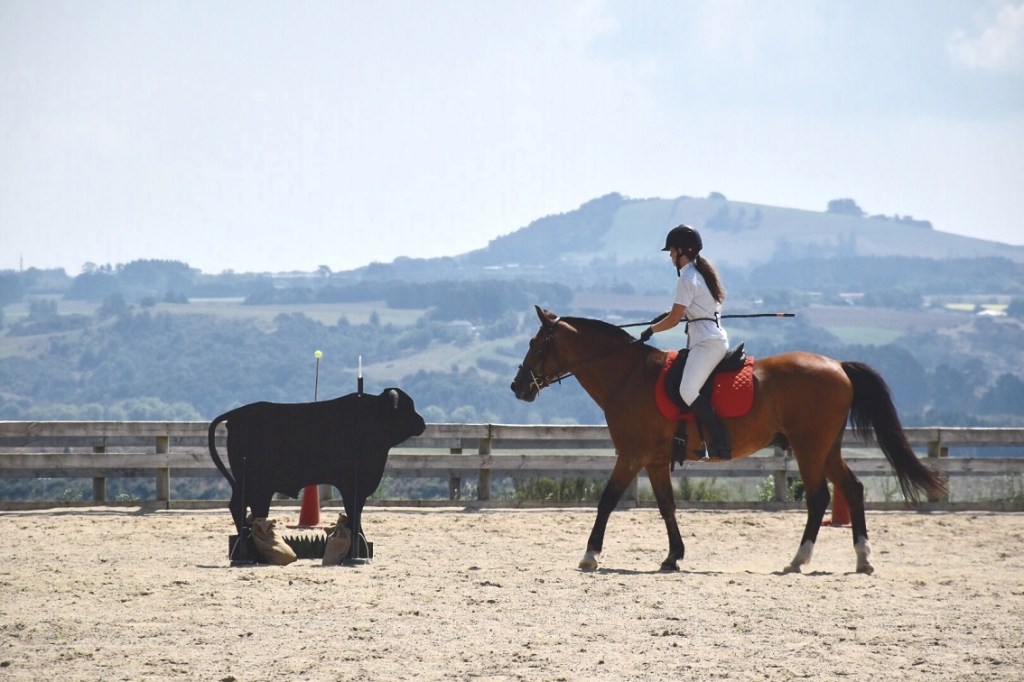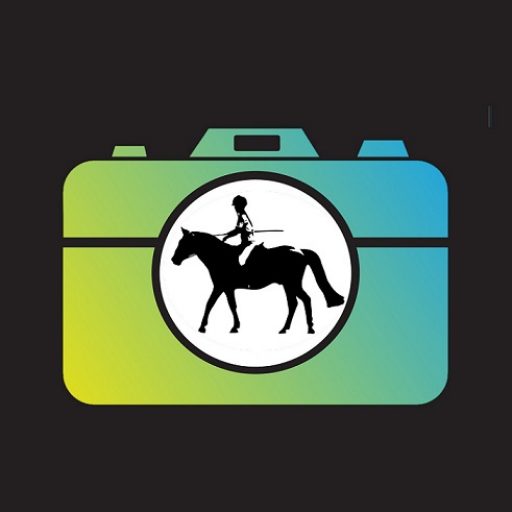Competition #14 is coming soon!
Scheduled for March/April 2026
![]() Classes available
Classes available
- In-hand / Liberty (walk / trot)
- Junior <16 / Para Rider (walk / trot)
- Introductory (walk / trot)
- Preparatory (walk / trot)
- Preliminary (canter and walk / trot)
- Novice (canter / walk)
- Elementary (canter / walk)
- Medium (canter / walk)
![]() Start practicing with exercises for January and February including obstacles in competition 14.
Start practicing with exercises for January and February including obstacles in competition 14.
⏰ Submit your exercises for judging and training feedback.

Obstacle Spotlight: Double Slalom
Setup requirements: Preparatory & Preliminary (Requirements for VWE course): • Two slalom lines using 5 poles • Initial line of 3 upright poles or cones spaced 7 m apart • Second line of 2 poles placed 7 m from the first line, evenly positioned at the centre point between the gaps Novice and above (Requirements…
More detailsObstacle Spotlight: Bell Corridor
Setup requirements: • Two poles forming the corridor • An upright mechanism at the end of the corridor to hold the bell • Bell height approximately 2 metres ✦Training show allowance: Slight variation is permitted for the virtual show so that we can accomodate the 20x40m arena size and obstacles that participants have on hand…
More detailsObstacle Spotlight: Single Slalom
Gait expectations * Introductory: Walk or trot Obstacle Setup * A straight line of five upright posts or markers * Evenly spaced at approximately 7 metres apart * Transition markers clearly placed at the entry and exit What Judges Are Looking For * Evenness and accuracy: A narrow, consistent weave with equal distance around each…
More detailsNew Year – New goals!
Virtual Working Equitation is excited to bring you our next series of exercises leading up to the March/April 2026 competition (#14) EXERCISE 1 – January 2026 Exercise Levels and Requirements INHAND & LIBERTY • Choose any WENZ level for selected obstacles. • Single or Double Slalom • Bell Corridor • Gate • Jug INTRO ~…
More details
New to Working Equitation?

Tack and Attire
Western, English, or Traditional attire and tack is acceptable. Bitless or bitted bridles are acceptable (but there are types of tack not allowed in the WENZ rules including some bits). Blunt spurs may be worn and whips may be carried. Please check with us if you are unsure.
Phases
Flatwork (Dressage)
For all tests and classes, the Flatwork is to be done in a 20×40 area that is marked at the corners (with poles, ropes or wood sides etc) and clear of other objects. Markers (to represent the Dressage letters) are to be placed in the normal positions as reference for distance and transition points.
Please film from C or if that is not possible then a position where the rider will be in full view at all times. Use of the camera zoom is encouraged when the rider is in the furtherest part of the arena, but preferably taking up no more than 1/3 of the camera view.
Ease of Handling
The Ease of Handling is also done in a 20×40 area that is marked at the edges. A course map, course measurements, and course walk videos will be provided. The viewpoint to film the Ease of Handling will be marked by a camera icon on the course map. The course directives in the course map must be followed to qualify as course completed. Please also note that in the WENZ rules, you must go through the start and finish flags in the direction marked on the course map, otherwise you will not have completed the course. A salute to the judge prior to the start and after completion (before the flags at the start and after the flags at the end) is also expected and there will be small penalty in the scoring if either salute is missed. All obstacles must be completed in order according to the course map directives to avoid disqualification.
Speed
The speed round may be part of some virtual competitions. It uses the same course as the Ease of Handling with adjustments to the requirements (such as removal of some obstacles or requirements for halting at obstacles). The rounds are timed with penalty time points for incomplete or missed steps.
Classes
LEAD-LINE / LIBERTY
The horse is on a lead or in-hand or directed at liberty through the tests by a non-riding handler. It can be completed in walk only, or adding in trot between obstacles. Note that this class is not part of the WENZ rules.
INTRODUCTORY
The horse is ridden in mostly walk and some trot for Flatwork and Ease of Handling. A minor child, adult or para rider may also be riding the horse with an adult present on the ground either leading the horse or accompaning as assistance.
PREPARATORY
The horse is ridden in walk and trot for Flatwork and Ease of Handling.
PRELIMINARY
The horse is ridden in walk and trot for Ease of Handling obstacles with canter between obstacles. Flatwork introduces working canter, reinback and leg-yield.
NOVICE
The horse is ridden in walk and canter for Ease of Handling obstacles, with the exception of the slalom which is trotted. Canter lead changes must be done with canter/walk/canter or canter/trot/canter. Flatwork introduces lateral work with leg yield, turn on the haunches.
ELEMENTARY
The horse is ridden in walk and canter for all Ease of Handling obstacles, with canter between obstacles. Canter lead changes must be done with canter/walk/canter in preparation for flying changes. Flatwork introduces collected and medium canter with half pass and shoulder-in.
MEDIUM
Highest level offered by WENZ rules, aimed to prepare riders for entering the WAWE masters level.
Filming and Upload
It’s best if you have a tracking camera or ask a friend to film you. We will accept a non tracked video from a static point, but it won’t be as easy for the judges/coach to give you accurate feedback, and for fairness, if something is not visible easily then it won’t be scored to the maximum possibility. Please check lighting and that the video is in focus the majority of time.
Videos need to be uploaded to your YouTube account before filling out the entry form. Please set the video visibility to either Public or Unlisted.
